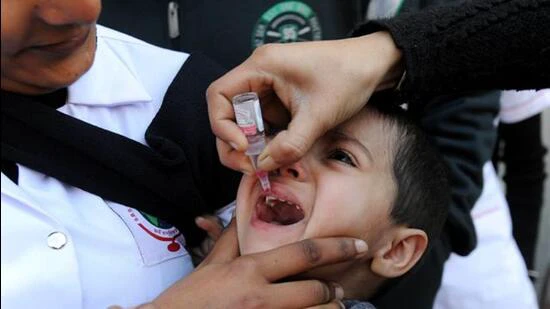When countries-especially low- and middle-income ones-are bracing to bear the impact of a funding crunch in the health care sector, there is some good news regarding India’s Universal Immunisation Programme (UIP).
Vaccination coverage under the country’s immunisation programme has seen a significant jump, especially with regard to covering zero-dose children-those who have not received even a single dose of any life-saving vaccine.
The recent World Health Organisation (WHO) and United Nations Children’s Fund (Unicef) global immunisation estimates for 2024, released on Tuesday, highlighted that the number of children who never received a single dose of any vaccine in India reduced by 43%-from 1.6 million in 2023 to 0.9 million in 2024. Globally, the number was 14.3 million children.
“Progress has been notably strong in India and Nepal. India reduced its number of zero-dose children by 43% (from 1.6 million in 2023 to 0.9 million in 2024), and Nepal achieved a 52% reduction (from 23,000 in 2023 to 11,000 in 2024). Pakistan also achieved its highest-ever Diphtheria-Tetanus-Pertussis, third dose (DTP3) coverage at 87%. However, Afghanistan still faces challenges, having the lowest coverage in the region and saw a 1% point drop in coverage over the past year,” a statement issued on the report said.
Under India’s national immunisation programme, vaccines are administered against 12 vaccine-preventable diseases: Diphtheria, Pertussis, Tetanus, Polio, Measles, Rubella, a severe form of Childhood Tuberculosis, Rotavirus diarrhea, Hepatitis B, and Meningitis and Pneumonia caused by Haemophilus Influenzae type B. Additionally, vaccines are administered sub-nationally against Pneumococcal Pneumonia and Japanese Encephalitis.
India’s immunisation programme is the largest in the world owing to the sheer number of eligible children and pregnant women.
According to immunisation coverage data shared last month by the union ministry of health and family welfare, India’s percentage of zero-dose children to the total population has declined from 0.11% in 2023 to 0.06% in 2024.
“Vaccination remains one of the most powerful and cost-effective public health interventions. India’s unwavering commitment to immunisation is evident through its UIP, which provides free vaccination services annually to 2.9 crore pregnant women and 2.6 crore infants (0-1 year). Our healthcare workers ASHAs (accredited social health activists) and ANMs (auxiliary nurse midwives) conduct over 1.3 crore immunisation sessions across the country,” a statement issued by the health ministry said.
The results of government efforts are visible in terms of reduced mortality and morbidity in children due to several of these vaccine-preventable diseases.
As per the latest government SRS (2020-22) data, India’s maternal mortality ratio (MMR) has declined from 130 per lakh live births in 2014-16 to 88 per lakh live births in 2020-22.
A report by the United Nations Maternal Mortality Estimation Inter-agency Group (MMEIG) said that the MMR of India stands at 80 per lakh live births, reflecting an 86% decline relative to the global reduction of 48% since 1990.
In addition, India achieved a 78% decline in the under-five mortality rate (U5MR), surpassing the global reduction of 61%, and a 70% decline in the neonatal mortality rate compared to 54% globally during 1990-2023, the report said.
The progress is significant; however, there still remains a pool of children that is being missed. Covering the last mile is a challenge that needs to be taken up head-on.
“The approach remains progressive, and continuous efforts are being made in the current year to further reduce the burden of zero-dose children in the country,” the health ministry added in the statement.
